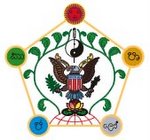
Childbirth is a very natural process that nature has successfully refined through tens of thousands of years. The knowledge of how to give birth has passed down through generations in our genes, Childbirth should thus be the same for today’s modern women as it was for a women living in a tropical jungle thousands of years ago.
But for a growing number of women today, the experiences of pregnancy and childbirth are diddled with feelings of fear, doubt and anxiety. The reason: Allopathic Doctors today treat birth as if it was illness – and pregnant women are treated like sick people.
Most pregnancies and birth today are medically managed. As childbirth increasingly “requires” medical intervention, most women “give up” responsibility for childbirth rather than “going along” with the process. Pregnant women thus inevitably go through a medical experience – from the time a women discovers she is pregnant to the day her baby is born and even after that she is subjected to routine use of technology in a laboratory setting.
In hi-fi obstetrics care, pregnancy is seen as a “risk condition” that requires medical intervention. The modern management of pregnancy and birth has, in fact, been described as prenatal care that “expects trouble”. As a result, women today have come to believe that childbirth is too dangerous and painful to endure without doctors and allopathic hospital.
Childbirth today has become is increasingly influenced by medical technology that in most Western countries, medical intervention is now the norm. Young women is these countries end up learning attitude about childbirth that are not positive. They grow up whole process of having a baby.
But what is of greater concern is this: According to some obstetricians, birth today has become too medicalised – at the expense of both mother and child. One worrying aspect of the medicalisation of childbirth is the Caesarean section, a major abdominal surgery for childbirth.
ghg
Risks for Baby, Risks for Mother
A Caesarean section, or a C-section, is major abdominal surgery, where surgeons make a series of separate incision in the mother. Cuts are made in the skin, underlying muscles and abdomen first, and then in the uterus, to allow removal of the infant. Like all major surgeries, there are risks involved, in this case, to both mother and the new-born.
Babies born by Caesarean not only don’t have the benefit ff labour, which squeeze fluid out of the new-born’s lungs, stimulates the baby’s ability to regulate body temperature, and may promote the release of hormones that encourage health lung function, they face serious risks to their lives too.
Risks for the baby include the following:
1. Premature birth. In a planned C-section, if the due date was not accurately calculated, the baby could be delivered too early. Removed too soon by Caesarean, the baby can suffer respiratory distress syndrome, transient tachypnea (abnormally fast breathing during the first few days after birth) and other lung disorders: feeding problems and various complication, which in some cases, require a ling allopathic hospital stay.
2. Foetal injury. Although rate, the surgeon can accidentally nick the baby while making the urine incision.
3. Death. Infants are more likely to die from a Caesarean than vaginal birth.
Risks for the mother are also grave:
1. Infection. The uterus or nearby pelvic organs, such as the bladder or kidneys, can become infected.
2. Increased blood loss. Blood loss on the average is about twice as much with Caesarean birth as with vaginal birth. However, blood transfusions are rarely needed during a Caesarean.
3. Reaction to anaesthesia. The mother’s health could be endangered by unexpected responses (such as blood pressure that drops quickly) to anaesthesia or other medications during the surgery.
4. Risk of additional surgeries – eg: hysterectomy, bladder repair etc.
5. Bowel of bladder injury
6. Respiratory complication. General anaesthesia can sometimes lead to pneumonia.
Caesarean, thought useful in warranted cases, is thus a risky operation that should be avoided in normal, healthy pregnancies.
Yet, today birth by C-section has reached an all-time high. In some countries today, it is even being offered as a choice for childbearing women to deliver their babies, or what is known as elective Ceasearean.
How common is the Caesarean culture? Let’s look at the statistics.
Sky-High Rates
The WHO states that no region in the world is justified in having a Caesarean rate greater than 10 – 15%. These are the optional levels for the best outcome for mothers and babies. Any country with a Caesarean rate above 15%, according to the WHO, should be looking at the reasons why.
Yet in countries with modern healthcare systems, the rate of Caesareans is many times higher than this.
In Australia, about 40% of all births are Caesareans and some medical experts believe they will soon become the norm. David Ellwood, a professor of obstetric and gynaecology at the Australian National University suggest 90% of birth in Australia will be via Caesarean with the next 2 decades (The Daily Telegraph, 11/3/07)
In Brazil, Caesareans account for nearly 40% of birth, 3 times the maximum limit of 15% recommended by the WHO. According to 2001 figures, more than 36% of all birth here are by Caesarean section; many private hospitals report rates in the 80 – 90% range.
In Italy, the rate is reported to be 32.9%
In the US, the Caesarean rate was 30.2% in 2005, up from 26% in 2002. The Caesarean rate here has in fact, risen 46% since 1996. There were 1.2 million Caesarean births here in 2004 alone.
In Canada the rate was 22.5% during 2001 – 2002.
In the United Kingdom, the Caesarean rate was about 20% in 2004. Today it has risen to above 23%.
The high rate of Caesarean section in most western countries is now regarded as a major public health problem and has spawned much discussion, numerous publication and meetings, and varied recommendations (study in Social Science Medicine, 1998).
The same trend has also been noted in other non-Western countries.
In Nigeria is reported to have a Caesarean rate of 34.6%.
Asian countries seem to be headed the same way, and from the statistics, the situation could be worse here.
In China, the ratio of Caesarean birth has soared to 50% , from a mere 5% in the 1950s – 1970s, far exceeding the standard of 15% set by the WHO (Xinhua Economic News, 15.2.07). Some urban allopathic hospitals have a C-section rate more than 60%!
In South Korea, it is reported that Caesarean section rates for 263 hospitals there were 45.9%, 42.7% and 44.6% in 1999, 2000 and 2001, respectively – rates that surpass those of western countries and that are also higher than the WHO recommendation.
In Thailand, the Caesarean rate is reported to have increased, from 15.2% in 1990 to 22.4% in 1996.
In Singapore, it is reported that 31% of women who gave birth in 2003 had a Caesarean, up from 24.5% a decade ago.
In Malaysia, official figure are kapt secret. But from statistic in the few available studies on maternal complication and death reported, child-bearing women are also exposed to similar risks.
In China, the ratio of Caesarean birth has soared to 50% , from a mere 5% in the 1950s – 1970s, far exceeding the standard of 15% set by the WHO (Xinhua Economic News, 15.2.07). Some urban allopathic hospitals have a C-section rate more than 60%!
In South Korea, it is reported that Caesarean section rates for 263 hospitals there were 45.9%, 42.7% and 44.6% in 1999, 2000 and 2001, respectively – rates that surpass those of western countries and that are also higher than the WHO recommendation.
In Thailand, the Caesarean rate is reported to have increased, from 15.2% in 1990 to 22.4% in 1996.
In Singapore, it is reported that 31% of women who gave birth in 2003 had a Caesarean, up from 24.5% a decade ago.
In Malaysia, official figure are kapt secret. But from statistic in the few available studies on maternal complication and death reported, child-bearing women are also exposed to similar risks.


